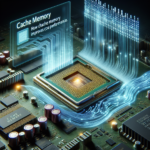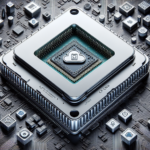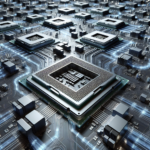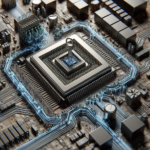Explaining the Relationship Between CPU and Storage Performance

Explaining the Relationship Between CPU and Storage Performance
In the realm of computing, the performance of a system is often gauged by how efficiently it can process and store data. Two critical components that play a significant role in this are the Central Processing Unit (CPU) and storage devices. Understanding the relationship between CPU and storage performance is essential for optimizing system efficiency, whether for personal computing, enterprise applications, or high-performance computing environments. This article delves into the intricate relationship between CPU and storage performance, exploring how they interact, influence each other, and contribute to overall system performance.
Understanding CPU Performance
What is a CPU?
The Central Processing Unit (CPU) is often referred to as the “brain” of the computer. It is responsible for executing instructions from programs by performing basic arithmetic, logic, control, and input/output (I/O) operations. The CPU’s performance is a critical factor in determining how quickly and efficiently a computer can run applications and process data.
Key Factors Influencing CPU Performance
Several factors influence CPU performance, including:
- Clock Speed: Measured in gigahertz (GHz), clock speed indicates how many cycles a CPU can perform per second. Higher clock speeds generally mean faster processing.
- Core Count: Modern CPUs have multiple cores, allowing them to perform multiple tasks simultaneously. More cores can significantly enhance performance, especially for multi-threaded applications.
- Cache Memory: CPUs have small amounts of high-speed memory called cache, which stores frequently accessed data to speed up processing.
- Instruction Set Architecture (ISA): The ISA defines the set of instructions the CPU can execute. Different ISAs can impact performance and efficiency.
- Thermal Design Power (TDP): TDP indicates the maximum amount of heat a CPU can generate under load. Efficient thermal management is crucial for maintaining performance.
Understanding Storage Performance
Types of Storage Devices
Storage devices are responsible for storing data and programs that the CPU accesses during operation. There are several types of storage devices, each with its own performance characteristics:
- Hard Disk Drives (HDDs): Traditional storage devices that use spinning disks to read and write data. They offer large storage capacities but are relatively slow compared to modern alternatives.
- Solid State Drives (SSDs): Storage devices that use flash memory to store data. SSDs are significantly faster than HDDs, offering quicker data access and transfer speeds.
- Non-Volatile Memory Express (NVMe) SSDs: A type of SSD that uses the NVMe protocol to communicate with the CPU, providing even faster data transfer speeds than traditional SSDs.
- Random Access Memory (RAM): Volatile memory used for temporary data storage while the computer is running. RAM is much faster than HDDs and SSDs but loses data when the power is off.
Key Factors Influencing Storage Performance
Several factors influence storage performance, including:
- Read/Write Speeds: The speed at which data can be read from or written to the storage device. Higher read/write speeds result in faster data access and transfer.
- Latency: The time it takes for a storage device to respond to a request. Lower latency means quicker access to data.
- Input/Output Operations Per Second (IOPS): A measure of how many input/output operations a storage device can perform per second. Higher IOPS indicate better performance for tasks involving frequent data access.
- Storage Capacity: The amount of data a storage device can hold. While capacity doesn’t directly impact performance, it affects how much data can be stored and accessed.
- Interface Type: The connection between the storage device and the CPU, such as SATA, PCIe, or NVMe. Different interfaces offer varying levels of performance.
The Interplay Between CPU and Storage Performance
Data Access and Processing
The relationship between CPU and storage performance is fundamentally about data access and processing. The CPU relies on storage devices to provide the data it needs to execute instructions. If the storage device is slow, the CPU may spend a significant amount of time waiting for data, leading to inefficiencies and reduced overall performance.
Bottlenecks and Latency
Bottlenecks occur when one component of a system limits the performance of the entire system. In the context of CPU and storage, a slow storage device can become a bottleneck, preventing the CPU from operating at its full potential. Latency, or the delay in data access, is a critical factor in this relationship. High latency in storage devices can cause the CPU to idle while waiting for data, reducing overall system efficiency.
Parallelism and Multithreading
Modern CPUs are designed to handle multiple tasks simultaneously through parallelism and multithreading. However, the effectiveness of these features depends on the ability of the storage device to provide data quickly. High-performance storage devices, such as NVMe SSDs, can keep up with the demands of multi-threaded applications, ensuring that the CPU remains productive and efficient.
Impact of Storage on CPU-Intensive Tasks
For CPU-intensive tasks, such as data analysis, scientific computing, and video rendering, the speed and efficiency of data access are crucial. High-performance storage devices can significantly reduce the time required to load and process large datasets, allowing the CPU to focus on computation rather than waiting for data. This synergy between CPU and storage performance is essential for achieving optimal results in demanding applications.
Optimizing System Performance
Balancing CPU and Storage
To optimize system performance, it’s essential to balance the capabilities of the CPU and storage devices. Investing in a high-performance CPU without considering storage performance can lead to bottlenecks and inefficiencies. Conversely, upgrading storage without a capable CPU may not yield significant performance gains. A balanced approach ensures that both components work harmoniously to deliver optimal results.
Upgrading Storage for Improved Performance
One of the most effective ways to enhance system performance is by upgrading storage devices. Replacing traditional HDDs with SSDs or NVMe SSDs can dramatically improve data access speeds, reducing latency and eliminating bottlenecks. This upgrade can lead to faster boot times, quicker application launches, and improved overall system responsiveness.
Leveraging Caching and RAM
Caching and RAM play a crucial role in bridging the gap between CPU and storage performance. By storing frequently accessed data in cache or RAM, the system can reduce the need to access slower storage devices. This approach minimizes latency and ensures that the CPU has quick access to the data it needs, enhancing overall performance.
Optimizing Software and Workloads
Software optimization is another critical factor in maximizing the relationship between CPU and storage performance. Efficiently designed software can minimize unnecessary data access and leverage parallelism to make the most of available resources. Additionally, optimizing workloads to match the capabilities of the CPU and storage devices can lead to significant performance improvements.
FAQ
How does storage performance impact CPU performance?
Storage performance impacts CPU performance by influencing data access speeds. Slow storage devices can create bottlenecks, causing the CPU to wait for data and reducing overall system efficiency. High-performance storage devices, such as SSDs and NVMe SSDs, provide quicker data access, allowing the CPU to operate at its full potential.
What is the role of cache memory in CPU performance?
Cache memory is a small amount of high-speed memory located within the CPU. It stores frequently accessed data, reducing the need to access slower main memory or storage devices. By providing quick access to critical data, cache memory enhances CPU performance and overall system efficiency.
Can upgrading storage improve gaming performance?
Yes, upgrading storage can improve gaming performance. Faster storage devices, such as SSDs and NVMe SSDs, reduce load times for games and assets, leading to quicker game launches and smoother gameplay. While the CPU and GPU are critical for gaming performance, high-speed storage ensures that data is readily available for processing.
How do NVMe SSDs differ from traditional SSDs?
NVMe SSDs differ from traditional SSDs in their interface and performance. NVMe SSDs use the NVMe protocol, which provides faster data transfer speeds and lower latency compared to the SATA interface used by traditional SSDs. This results in significantly improved storage performance, making NVMe SSDs ideal for high-performance computing tasks.
What is the impact of RAM on CPU and storage performance?
RAM plays a crucial role in bridging the gap between CPU and storage performance. It provides temporary storage for data that the CPU needs to access quickly. By storing frequently accessed data in RAM, the system can reduce the need to access slower storage devices, minimizing latency and enhancing overall performance.
Conclusion
The relationship between CPU and storage performance is a critical factor in determining overall system efficiency. Both components must work harmoniously to ensure that data is processed and accessed quickly and efficiently. By understanding the interplay between CPU and storage, optimizing system performance through balanced upgrades, and leveraging caching and RAM, users can achieve significant performance gains. Whether for personal computing, enterprise applications, or high-performance computing environments, a well-optimized relationship between CPU and storage is essential for achieving optimal results.




